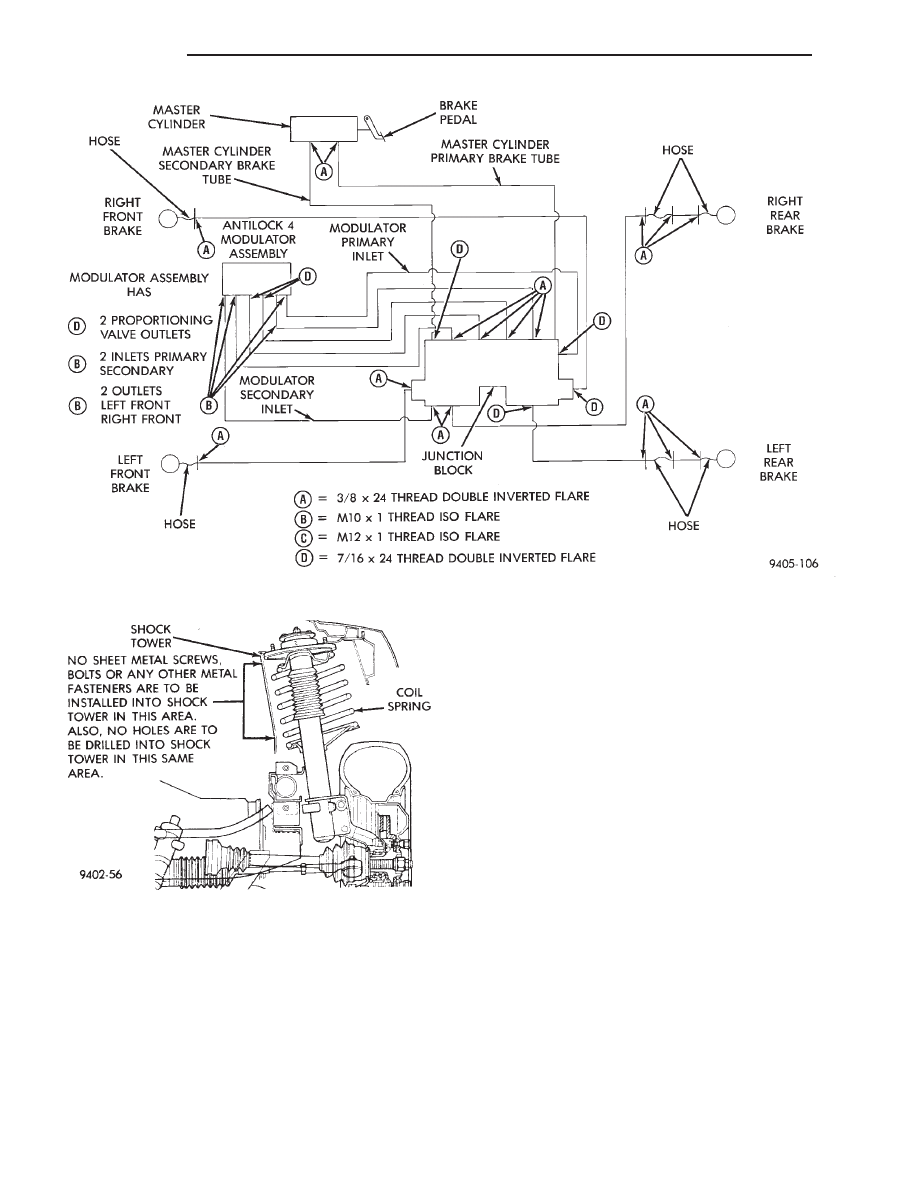Chrysler Le Baron, Dodge Dynasty, Plymouth Acclaim. Manual - part 246

Fig. 2 Bendix Antilock 4 Brake Tube Routing And Fitting Locations
Fig. 3 Shock Tower To Spring Minimum Clearance
Area
5 - 2
BRAKES
Ä
|
|
|

Fig. 2 Bendix Antilock 4 Brake Tube Routing And Fitting Locations Fig. 3 Shock Tower To Spring Minimum Clearance Area 5 - 2 BRAKES Ä |